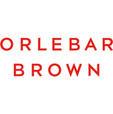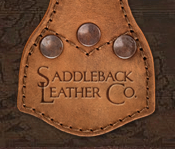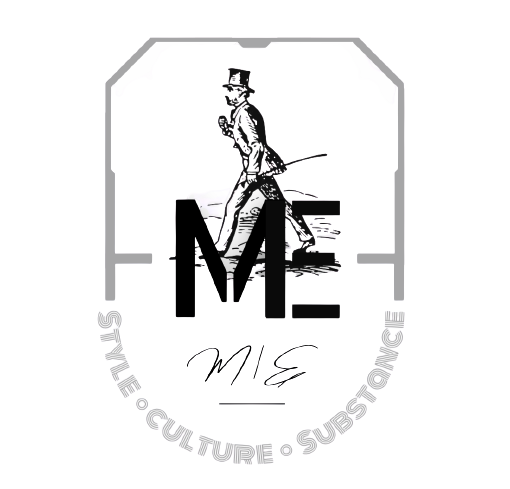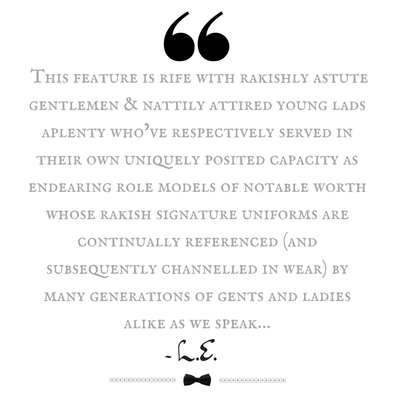
Our style, inasmuch, contextually allows us to impress upon the world our individuality, civility, and cultivated sense of decorum through the uniquely posited exclusivity of our signature state of dress, grooming and mannerisms.
Howbeit, it bears particular note that what we each perceive to be stylish, or rather how we choose to decode such essential nonverbal communication in one’s dress, are learned abilities both shaped and heavily influenced by that in which we are either routinely subjected to on a daily basis or rather taught by our elders, idols and mentors alike from our formative years through adulthood.
That is to say that that our personal concepts of what having style means, or what could be considered as being enduringly stylish, are acquired tastes most often learned, molded or governed most by what we see, read, and watch rather then by an innately developed sensibility.
Case in point: The noteworthy style of the following ten animated sartorial icons whose rakish sartorial comportment and signature uniforms not only likely inspired many as children but who also perhaps helped shape our foundational concepts of what having style entails whilst continually having a collective cultural resonance and inspired sartorial draw to their eternal account that is simply astounding.
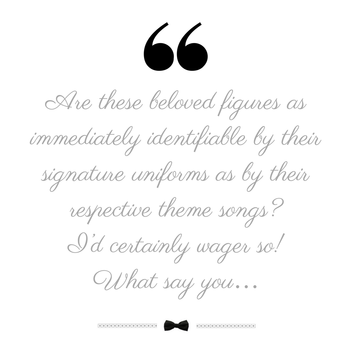
To wit, I can vividly recall numerous occasions from my childhood when I simply pined for Rupert the Bear’s windowpane checked trousers or Basil of Baker Street’s opulent Sherlockian (unbeknownst to me at the time) smoking jacket as well as more recent sartorial stirrings when Sterling Archer’s 007-inspired black turtleneck’s and Clark Kent’s subtle statement-making double-breasted suits (in the groundbreaking 1940s’ Fleischer animated shorts) spurred me to inspired envy…and for the most parts I still hold such traditionally revered wardrobe staples in the highest sartorial regard given my ownership of many including a trench coat (or rather mac) cast in the light of the intrepid Mr. Tintin’s as well as a corduroy suit cut akin to that of my childhood idols, the Fantastic Mr. Fox, whose rustic heritage style was masterfully brought to inspired sartorial fruition courtesy of the equally eclectic, preppy and talented Mr. Wes Anderson (to name but two examples).
Naturally what I am alluding to are those quintessential articles of clothing that, if truth be told, not only inspired my younger self to dress better but that would have left him in a perpetual state of sartorial nirvana upon hearing his older self commissioned a great many into his everyday employ.
My overall point being is that each of us was likely (or perhaps still remains so) — whether subconsciously or knowingly — influenced in one way or another by the signature styling nuances proffered by our beloved animated idols from whom many of us were taught the basic fundamentals of what it means to dress well not only for success and comfort but for most any occasion or season with cultivated panache.
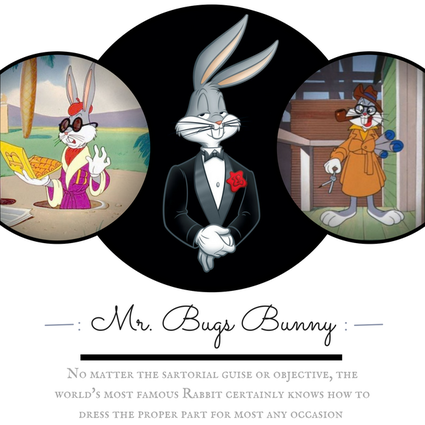 — Honourable Mention: Mr. Bugs Bunny --
— Honourable Mention: Mr. Bugs Bunny -- It is, after all, a uniquely expressive social tool that distinguishes us from all others; a visually invigorating language unto itself that instantly conveys and communicates who we are in a manner that comprehensively transcends the capabilities of any spoken language.
In light of that, what is most notable about these incredibly well-heeled and iconically treasured animated characters is that are all fashionably equipped with wardrobes that have an ageless classicism underscoring to which they take to uniquely sporting with comfort, confidence and a comported propriety in style often referred to as elegance — they wear their clothing with enviable grace, ease, finesse and aplomb.
Having said that, it is my aim today to both espouse upon and facilitate a discussion of the enduring proprieties, sensibilities, and inspired possibilities of menswear through that of the inspired lens of a discerning selection of rakish animated gents whose distinctively smarter styling proclivities have an iconic permanence about them rather then simply a flash-in-the-pan, shock-and-awe inducing trendy appeal; Those, if you will, with true sartorial staying power who’ve become synonymous with a timelessly refined aesthetic that is instantly recognizable, a distinctive state of dress that is at once classic and imperviousness to the tidal vicissitudes of fashion, and a popularity that waxes and wanes from worldwide fame to niche acclaim.
And so without any further or ado, let’s now dive headlong down the rabbit hole into exploring the sartorial legacies of the Top 10 (presented in not particular order per se) most rakish animated icons whose distinguished signature uniforms remain as fresh and relevant today as when they first made their initial bows on screens both big and small (from the 1940s’ through the modern day as it were) many years ago.
Equally mined from past and present with accompanying notes being made on why each is considered an inspirational icon, what signature pieces within their employ are truly investment worthy, the 10 lessons in style to takeaway from their experience, and a poll to cast your vote (should you desire that is) on whom it is you hold in highest aspirational regard (the most nattily attired and striking of them all if you will), herewith are my chosen ten…
———————————————--
| |
| |
| |
Howbeit, the question likely remaining on the lips of any nay-sayer who doubts their tangible sartorial credentials would be whether or not their (purported) iconic style truly holds up with respects to both contemporary standards and inspiring not only new generations of young boys but also grown men (and yes, women) to dress better as we speak?
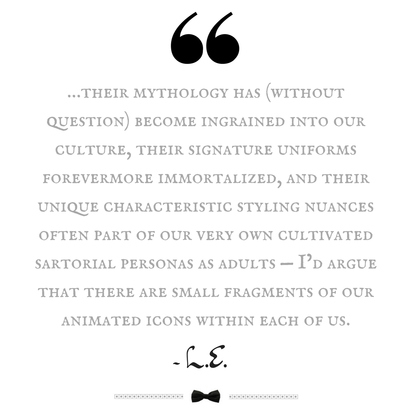
Inasmuch, and for tangible proof of just how they manage to continually influence our collective sartorial psyche well beyond both their inevitable cultural expiry date as well as the reach of our formative years, all one need do is take measure of how many amongst us (whether we would care to admit it or not) came to invest in specialized wardrobe accoutrements that we had previously pined for as children simply as consequence of our beloved animated idols once wearing them — my wardrobe, for one, is marked by many such staples if truth be told.
To wit, it certainly stands to reason that their mythology has (without question) become ingrained into our culture, their signature uniforms forevermore immortalized for posterity, and their unique characteristic styling nuances often part of our very own cultivated personas as adults (I’d argue that there are small fragments of our animated icons within each of us).
Howbeit, for both better AND for worse, and from classic formalwear through caped latex, it warrants peculiar note that many of us subsequently came to worship them not simply for who they were (our heroes, icons, muses, etc.) and what they stood for but for their rakish style and sartorial comportment — the latter being a trait many of us only truly appreciate in hindsight years after the fact.
And so while some may indeed be vain, morally questionable adolescents masquerading as adults (Archer for example) and others consummate gentlemen (Mr. Kent) of impeachable virtue, at the end of the day what they all undeniably share is immediate sartorial presence, an endearing love for establishing signature uniforms and unique personal style of note, and a characteristic penchant for looking good through variable thick-and-thin.
My point being…
So, should they join the golden influential ranks of Messrs Grant, Dean and Sinatra? Perhaps not, however that needn’t mean these animated gents (and lads) don’t deserve sartorial reverence (they do) nor that they should be deprived of their own claim to iconoclastic sartorial fame for they are all indeed unheralded figures of considerable sartorial fortitude.
Either or, I’ll let you wonderful lot be the judge whilst you bear this final verdict in mind…
_____________________________
Share your thoughts, musings and opinions below…
And, don't forget to cast your vote below as well for most stylish animated icon of all-time…







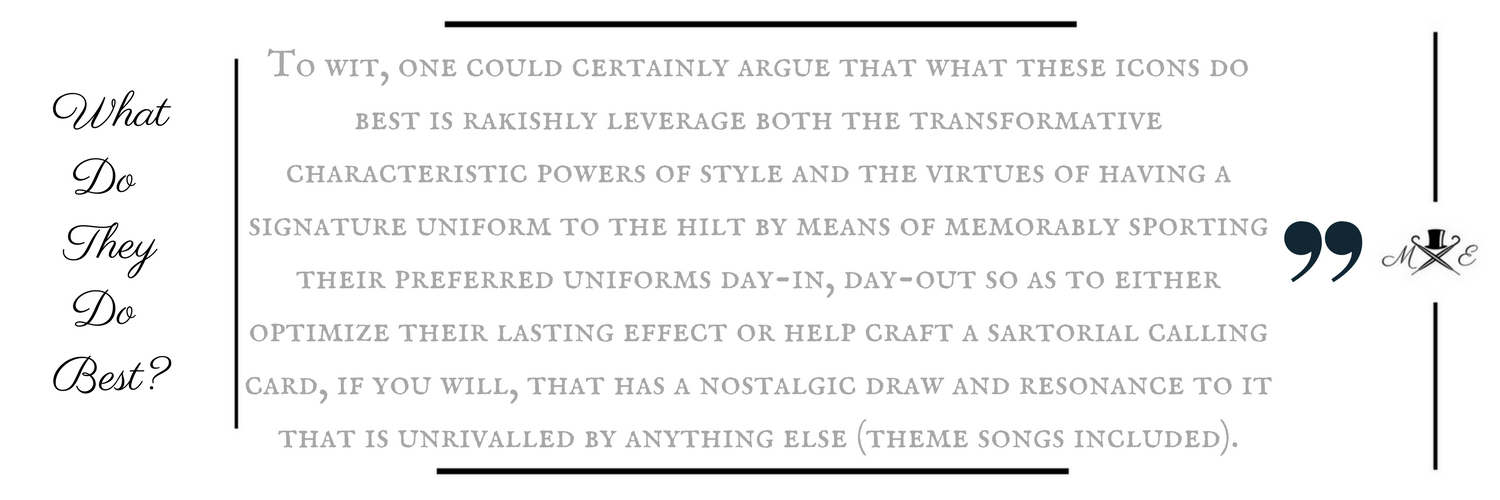



















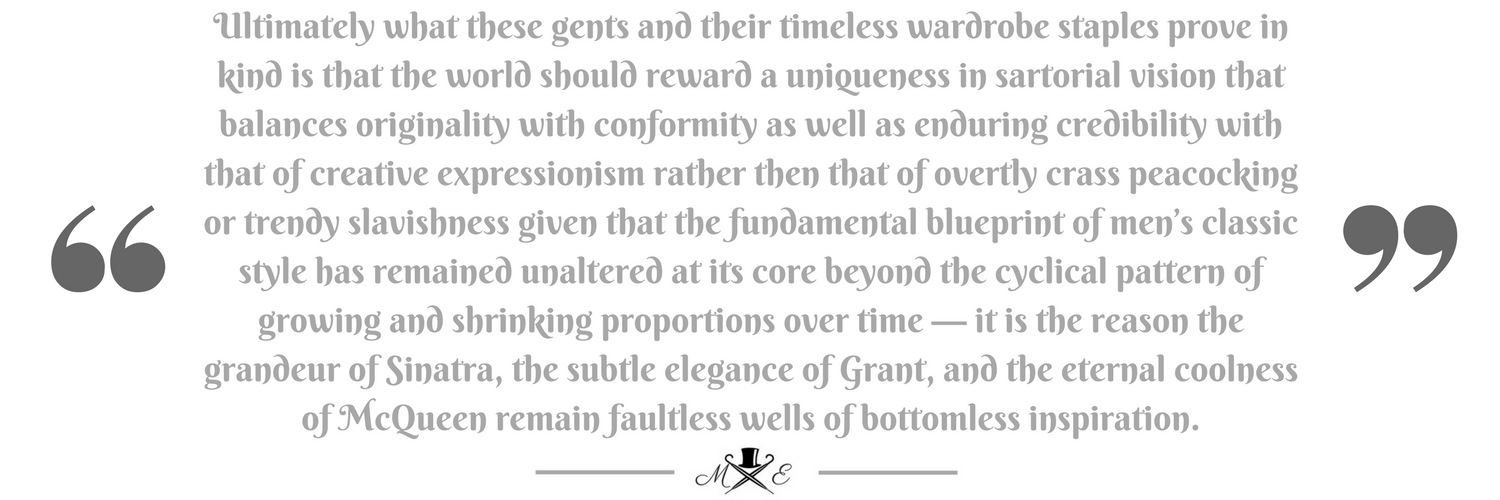




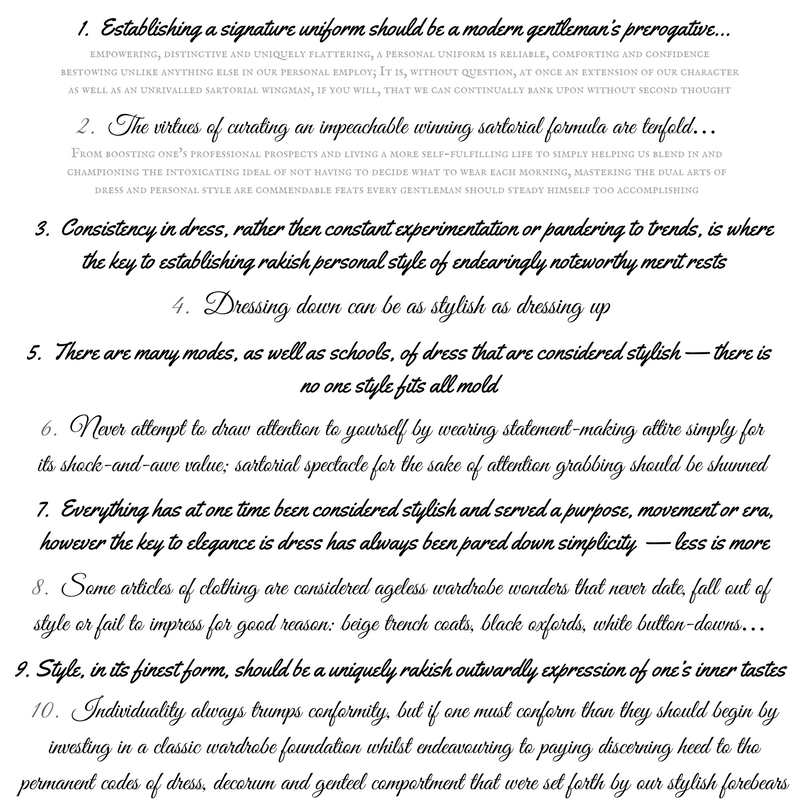



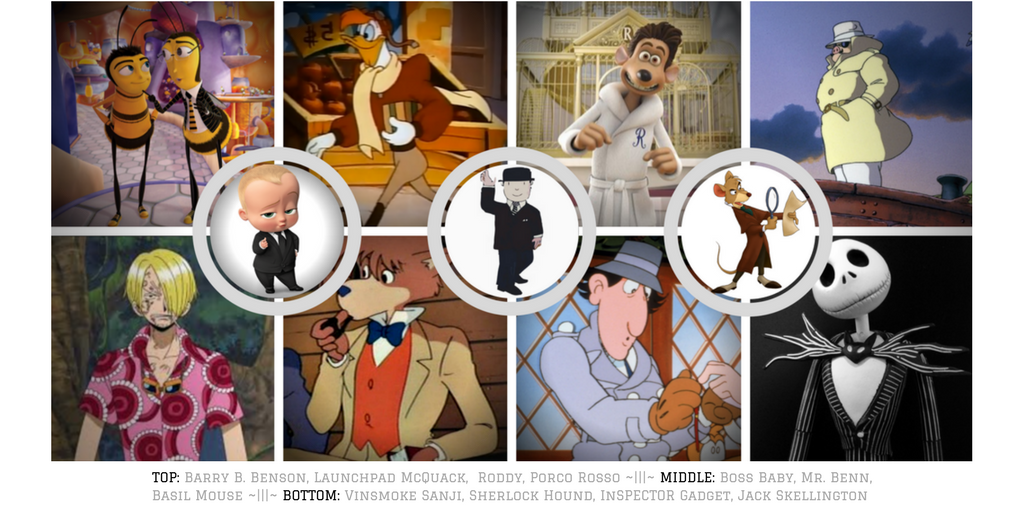

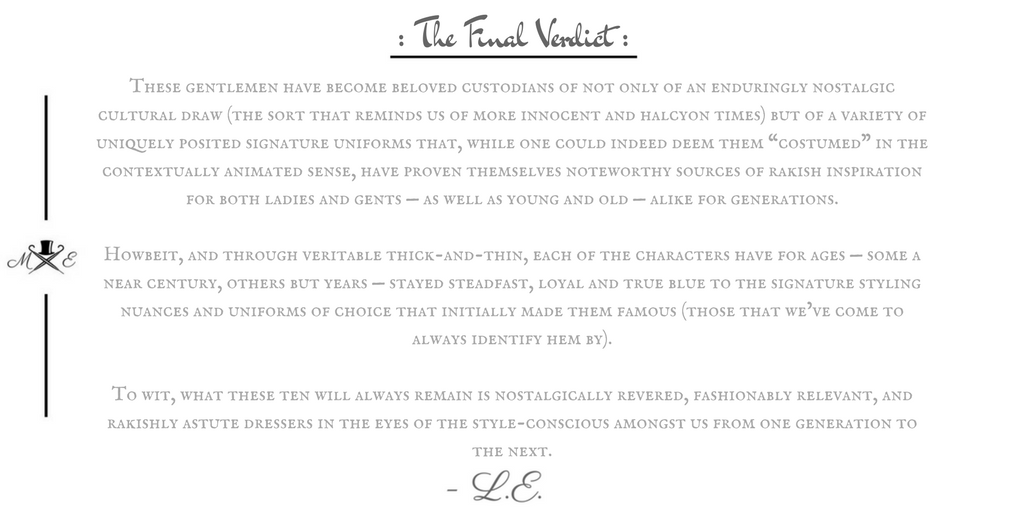

 RSS Feed
RSS Feed



